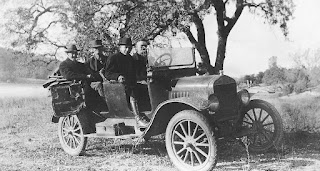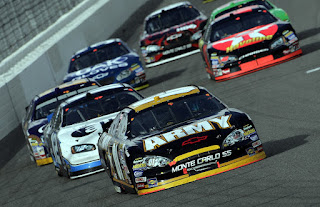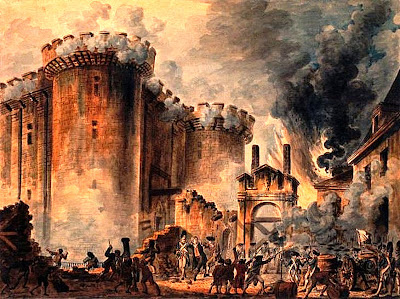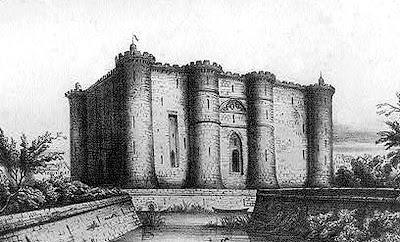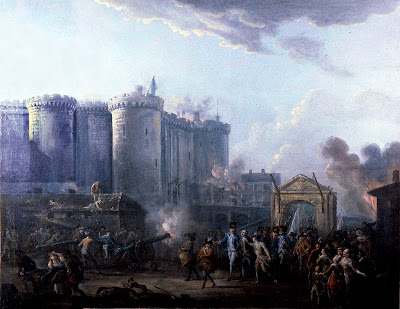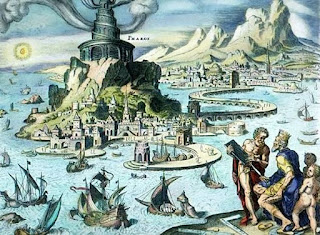Animation of a 3-D model - created from Hubble Space Telescope and ground-based data of the Helix Nebula
 | High Resolution Image 3.62 MB(6145 x 6623 pixels). Credit:NASA, ESA, C.R. O'Dell (Vanderbilt University), M. Meixner and P. McCullough STScI ABOUT THIS IMAGE: This composite image is a view of the colorful Helix Nebula taken with the Advanced Camera for Surveys aboard NASA's Hubble Space Telescope and the Mosaic II Camera on the 4-meter telescope at Cerro Tololo Inter-American Observatory in Chile. |
The Hubble images were taken on November 19, 2002; the Cerro Tololo images on Sept. 17-18, 2003.
Looks can be deceiving, especially when it comes to celestial objects like galaxies and nebulas. These objects are so far away that astronomers cannot see their three-dimensional structure. The Helix Nebula, for example, resembles a doughnut in colorful images. Earlier images of this complex object — the gaseous envelope ejected by a dying, sun-like star — did not allow astronomers to precisely interpret its structure. One possible interpretation was that the Helix's form resembled a snake-like coil.
Now, a team of astronomers using observations from several observatories, including NASA's Hubble Space Telescope, has established that the Helix's structure is even more perplexing. Their evidence suggests that the Helix consists of two gaseous disks nearly perpendicular to each other.
Copyright Notice: Material credited to STScI on this site was created, authored, and/or prepared for NASA under Contract NAS5-26555. Unless otherwise specifically stated, no claim to copyright is being asserted by STScI and it may be freely used as in the public domain in accordance with NASA's contract. However, it is requested that in any subsequent use of this work NASA and STScI be given appropriate acknowledgement.
Embedded computers research by Virginia Tech's Shukla attracts national attention and Volkswagen Beetle classic 'Bug' and President Bush, Gordon Brown, Joint Press Availability VIDEO











![Political Party Symbols Elephant and Donkey Credit Line: Library of Congress, Prints & Photographs Division, [reproduction number, LC-USZ62-56776]](https://blogger.googleusercontent.com/img/b/R29vZ2xl/AVvXsEjcX8G620XgUha4ExSGaCnhlWucjeW8v8aXdYv25ECBZr38rYBcj3hfwqYmi7tmoNqoiSTD3YAmdMjOL6u1PdUBFQSL3rgfD_-5Xd3rw-qee1T714Ux8d7_xmDoWL-j7o1vAjiY/s320/political_party_symbols_donkey_elephant_5.jpg)
![Political Party Symbols Elephant and Donkey Credit Line: Library of Congress, Prints & Photographs Division, [reproduction number, LC-USZ62-56776]](https://blogger.googleusercontent.com/img/b/R29vZ2xl/AVvXsEgkfYw_KSjg6W0Xe3YP_KkUM2FAVek5w3vIRGTAhale1uptsSNDv95lP-xTdJKOHitoNEzuykgwqjbcGs0RWJXywov0AC43dU1dLLCcfOTLs85B6R3yqS-ufn1rFhpReD9AeCHW/s320/political_party_symbols_donkey_elephant_4.jpg)



![Political Party Symbols Republican Elephant Credit Line: Library of Congress, Prints & Photographs Division, [reproduction number, LC-USZ62-89636]](https://blogger.googleusercontent.com/img/b/R29vZ2xl/AVvXsEjcZv78C9lvWcsS3D5WdqJCEeIx-XZ2HaLULbCzpgCBDRFoAdebLHVcu4Zd8HhTzCGvBn3r2nyKHoMSfKTnGgxqrS4V2qRT-5xbMOPJozXSpJ3_eEGKeYmfO42bkZ1v8nkiKk-A/s320/political_patry_symbols_republican_elephant_2.jpg)
![Ford Model T 'Tin Lizzies' Credit Line: Library of Congress, Prints & Photographs Division, [reproduction number, LC-USZ62-62258]](https://blogger.googleusercontent.com/img/b/R29vZ2xl/AVvXsEhzEpceIqOY1JhTaQIbT33urwj6Nl6WDIVqXdp5PWpq2AdlBegfEKwhe91ql_m8aOPaxfKSnmD7IlXh-lQTn0YBjcC00ZwzZFNyO1nupxi1_UwQLUlMRLSkROLLubit4aLFMU41/s320/cars_model_t_2.jpg)
![Row of completed 'Tin Lizzies' or Model T's come off the Ford assembly line. Credit Line: Library of Congress, Prints & Photographs Division, [reproduction number, LC-USZ62-63968]](https://blogger.googleusercontent.com/img/b/R29vZ2xl/AVvXsEhkrZJlbyZfTv8ePt9DNKqi6m0cfoM5Rf1pS_AiU5_wPrbPhuuPqWSz5guLa4L5KKBeT3ZFnFmfdOECTUJ9OivV1rvEL-aQTJ66JI0bZNdv5ukN2vd0lIlE8K31U_wXS1O6ytvD/s320/cars_model_t_4.jpg)


![Political Party Symbols, Democrat donkey, Republican elephant, Credit Line: Library of Congress, Prints & Photographs Division, [reproduction number, LC-USZ62-71333]](https://blogger.googleusercontent.com/img/b/R29vZ2xl/AVvXsEiu_0fyxPKkik1nv5ymri6GpbwftFYBycooYxlu89bTtQ120TCDzVRgc7Gpc7VnJhHM44BC6FvlDSAWKtWrSnz6WwbY-zygVsp0NfBagOBz7cTbFfEE37_WCFgeuzE2Hpyr9Pl1/s320/donkey_elephant.jpg)



